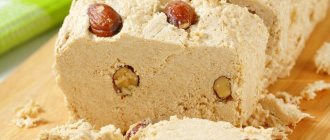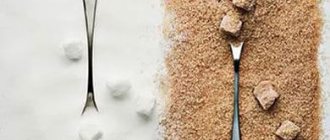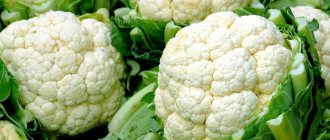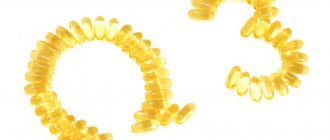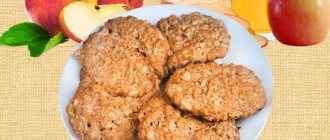Breastfeeding places restrictions on a woman's consumption of different foods. For the baby’s health, it is important that his mother does not drink drinks containing alcohol, chemical additives, dyes, or caffeine. Due to the fact that coffee is not a desirable product during breastfeeding, many nursing mothers replace it with cocoa. Some experts include it in the list of undesirable foods during lactation. So is it possible to consume cocoa while breastfeeding?
What is cocoa?
Cocoa is a drink made from ground cocoa beans that contains about 0.1-02% caffeine. It is believed that this drink invigorates, replenishes lack of energy and improves mood. Also, a moderate amount of its consumption has a positive effect on the functioning of many organs and systems in the human body. The saturation of the drink with fats makes it quite nutritious, and in combination with milk it can easily replace any snack. It also contains enough antioxidants that have a positive effect on blood pressure. Ground cocoa beans can cause an allergic reaction, so it is better not to drink this drink for allergy sufferers.
Cocoa powder is obtained from cocoa beans
Properties
The composition of cocoa is quite diverse. It is rich in proteins, alkaloids, vitamins (A, B, E), calcium, magnesium, potassium, organic acids, polysaccharides, cellulose, starch, cocoa butter and many other components. Thanks to this saturation, cocoa bean powder brings many benefits to the body.
Positive properties of cocoa:
- Stimulates the functioning of the central nervous system. Improves blood circulation in the brain, which increases concentration, attention, and memory.
- Is an antidepressant;
- Positively affects the functioning of the stomach, removes toxins;
- Has a beneficial effect on the cardiovascular system;
- It is a preventative against cancer;
- Positively affects the condition of hair, nails, skin;
- It is a treatment for colds and persistent coughs.
Cocoa has a lot of positive properties
Is it possible to drink cocoa while breastfeeding?
The answer to the question whether a woman can drink cocoa while breastfeeding is ambiguous. On the one hand, due to its composition, cocoa has a positive effect on the mother’s body. On the other hand, in order for the benefits of use to be maximum and the negative consequences reduced to zero, you need to follow some rules. Thus, it is extremely undesirable to introduce cocoa into the diet in the first month of a child’s life, and even in the second. It is advisable for a nursing mother to start using it no earlier than 3 months after giving birth. The fact is that the content of even a small dose of caffeine can excite the baby’s immature nervous system, he can become more irritable, vulnerable, and have difficulty sleeping.
Cocoa belongs to the list of chocolate products and is a fairly strong allergen. Therefore, it should be introduced into the diet of a nursing mother with extreme caution so as not to harm the baby.
Harm or benefit for mother and baby?
If a woman has not previously had an allergic reaction or individual intolerance to cocoa, then after childbirth there should also be no negative consequences for the body. The main thing is not to abuse it and use only high-quality raw materials to prepare the drink. Unlike the stronger body of an adult, a newborn is more vulnerable to products containing caffeine. Failure to follow the recommendations for drinking this drink can cause negative consequences for the baby’s health.
Possible negative consequences of consuming cocoa during breastfeeding for a baby include:
- Disruption of the nervous system, which increases the child’s excitability, anxiety, and sleep;
- Washing of calcium from the baby’s body (due to the presence of alkaloids in cocoa beans);
- The appearance of an allergic reaction;
- Disruption of the digestive system due to low-quality raw materials and their chemical processing.
It is worth noting that cockroaches live in cocoa beans on chocolate trees, which are quite difficult to remove. Therefore, these insects can get into the grinding along with the beans. Such foreign components of the drink can have a bad effect on the baby. The baby may experience colic, bloating, constipation, diarrhea or vomiting.
An allergic reaction to cocoa is quite rare.
Effect on lactation
Chocolate products are undesirable during breastfeeding not only because of the negative effects of caffeine on the newborn. They also have a bad effect on lactation. The fact is that they slow down the process of milk production, which can lead to its complete absence. Therefore, nursing women should consume cocoa with extreme caution during lactation.
Contraindications for use
A drink during lactation is not recommended in the following cases:
- The presence of an allergic reaction in the mother or child;
- Kidney disease in a child;
- Neurological diseases in infants;
- Poor absorption of calcium in the baby.
Is it possible to have cocoa with milk?
Again, some young mothers cannot overcome their addictions and, despite any prohibitions, drink the above drink with milk. Is it worth reproaching them for this? Can a nursing mother have cocoa with milk?
And here doctors show loyalty, but at the same time they emphasize that the product can be introduced into the diet only several months after birth. As noted, when making cocoa, you should use a low-fat cow's product.
It is not recommended to enjoy the drink in the afternoon, otherwise you may not notice your baby’s reaction to cocoa in time. And, most importantly, remember a sense of proportion.
Rules for using cocoa during breastfeeding
In order to minimize the negative consequences of consuming cocoa, you need to follow some rules:
- Do not drink the drink in the first three months after the birth of the baby;
- It is better for the mother to enjoy this drink after feeding (it will be better absorbed and will cause less harm to the baby);
- Drink no more than 3 standard cups per week;
- Do not brew a strong drink (more than 1 teaspoon per cup);
- It is better to consume cocoa in the first half of the day (so as not to cause excitement in the baby at night);
- It is not advisable to use it when the child has problems with bowel movements.
In the first months after the birth of a baby, a woman should stop drinking cocoa.
When and how can you introduce cocoa into your mother’s diet?
The baby’s insufficiently formed nervous system does not allow a nursing mother to drink cocoa until the baby is three months old. The first time, if there are no contraindications, the mother should drink just a couple of sips in the morning and monitor the reaction of the child’s body throughout the day. If your baby has a rash, red spots on the body, bad stool, tummy problems, poor sleep, excessive nervousness or irritability, then you should stop drinking the drink for a month.
Consumption rate
In order for the benefits of cocoa to be maximized and the negative consequences reduced to zero, a nursing mother needs to know when to stop. Drinking during lactation should not exceed 2-3 standard cups of tea (200 ml) per week. It is also undesirable to drink a lot of green or black tea a day along with cocoa, as the level of caffeine in the body will rise, which can have a bad effect on the baby’s behavior.
Is it possible to add milk and sugar to cocoa?
To improve the taste, it is recommended to add low-fat milk to cocoa; it increases calorie content and promotes the flow of breast milk, which is important during lactation. Sugar should be added in small quantities or avoided altogether. It is better to replace sugar with fructose.
Rules for drinking the drink during lactation
For safety reasons, you should adhere to the following recommendations:
- For the first time you can drink no more than 50 ml. It is recommended to carry out the test in the morning to speed up the onset of the reaction in the presence of individual intolerance. After 2 days, if there is no allergy, you can drink another portion. When breastfeeding, during the first month you can increase the dose of cocoa to 1-2 cups per week.
- The drink should be prepared with low-fat milk and no sugar. It is allowed to add fructose.
- If your baby has an allergy, you should exclude the product from the menu. You can re-enter it no earlier than in a month. In such cases, it is recommended to drink the drink after feeding to minimize the chance of a reaction.
You need to carefully choose the brand of cocoa. Exotic insects often live in beans. To destroy them, the fruits are treated with pesticides. It is difficult to clear the mass of parasites, so small companies grind the beans along with them. High concentrations of chemicals and poor processing make the product more dangerous.
Due to the presence of sugar in the composition, the share of Nesquik in the menu should be strictly limited. During breastfeeding, sweet cocoa can be consumed no more than 1-2 times a month, one cup (200 ml). It is recommended to replace it with pure powder. The best option is grated cocoa, which contains butter, but its cost is much higher.
Many doctors prohibit drinking the drink for the first three months after childbirth. If you decide to try it, then you need to take into account some important nuances. To prepare, take low-fat milk, you can dilute it with water, following a ratio of 2:1 or 3:1. It is advisable not to add sugar.
After giving birth, you should drink cocoa only before lunch, immediately after feeding. This is necessary in order to observe the baby’s reaction to a new product that is an allergen. If there is minimal suspicion of an allergy - itching, redness, rash, stop this experiment immediately. You can try again after a few weeks. If the baby reacts normally, you can drink 100 milliliters of the drink once a week.
Rules for choosing in the store
In order to be confident in the quality of the product, you need to be able to choose it correctly. There are the following recommendations when choosing cocoa:
- High-quality product packaging. Foil is better suited for this, which will not allow moisture, heat, or various insects to pass through;
- The composition must be without the addition of flavor enhancers, preservatives, and sugar. It should be as natural as possible;
- Fat content up to 15%;
- Fine grind;
- The inscriptions RAW or Live on the packaging mean that it has not been subjected to severe heat treatment, which means that all the beneficial substances have been preserved;
- Quality products are supplied by manufacturers from South America (Peru, Venezuela). It is better to avoid Chinese second-rate cheap cocoa products.
Unfortunately, today many fruits of the chocolate tree are treated with chemicals and stored in unsanitary conditions. Therefore, it is important to first verify the quality of the product before it enters the body of a small child.
Cocoa Nesquik
Nesquik cocoa, a fairly popular delicacy for children, is not highly recommended for a nursing mother. The fact is that this product contains a huge amount of sugar, as well as flavorings and preservatives. Nesquik also contains vitamins and minerals necessary for the body. Therefore, if you take it no more than once a week and dilute it in plenty of water, it will not cause harm.
It is not recommended to consume Nesquik cocoa while breastfeeding.
Why is chocolate harmful?
What risks does this product carry?
Like cocoa, chocolate can cause allergies in a child, so in the first month after birth it is necessary to exclude it from the diet 100%. The fact is that during this period, all vital systems of the body are just getting used to life, and excess load is contraindicated for them. Only in the third month can you try the innovation, and even then without forgetting to monitor the child’s condition. Chocolate can also cause diathesis. In this case, you should immediately abandon this delicacy. And of course, do not forget to consult your doctor about this before eating sweets.
How to brew cocoa yourself?
You should not buy a ready-made instant drink; it may consist of poor raw materials, without useful substances. Therefore, the best option is to prepare the drink yourself. To do this you will need:
- 2 tbsp. cocoa powder;
- 1 glass of water;
- 1 glass of milk.
Method of preparation: Pour cocoa into boiled water and cook for 4-5 minutes. Next, add milk and bring the mixture to a boil, continue to cook until thickened over low heat. Add sugar to taste.
Thus, drinking cocoa while breastfeeding is possible, but you should not get carried away with it. The correct dosage of the drink, the quality of the raw materials and the correct preparation method will allow you to get the maximum benefit.
Recipe
When preparing a drink for a mother who is breastfeeding, it is better to use milk with a small percentage of fat content, and it is better to dilute it half with water. It is advisable to drink without added sugar.
Recipe for 1 serving:
Take 0.5 cups of milk and water, mix and boil. Add 1-2 teaspoons of powder, mix thoroughly. If desired, you can add ¼ teaspoon of cinnamon. Place on the fire and bring to a boil, but do not boil. Serve the drink hot.
